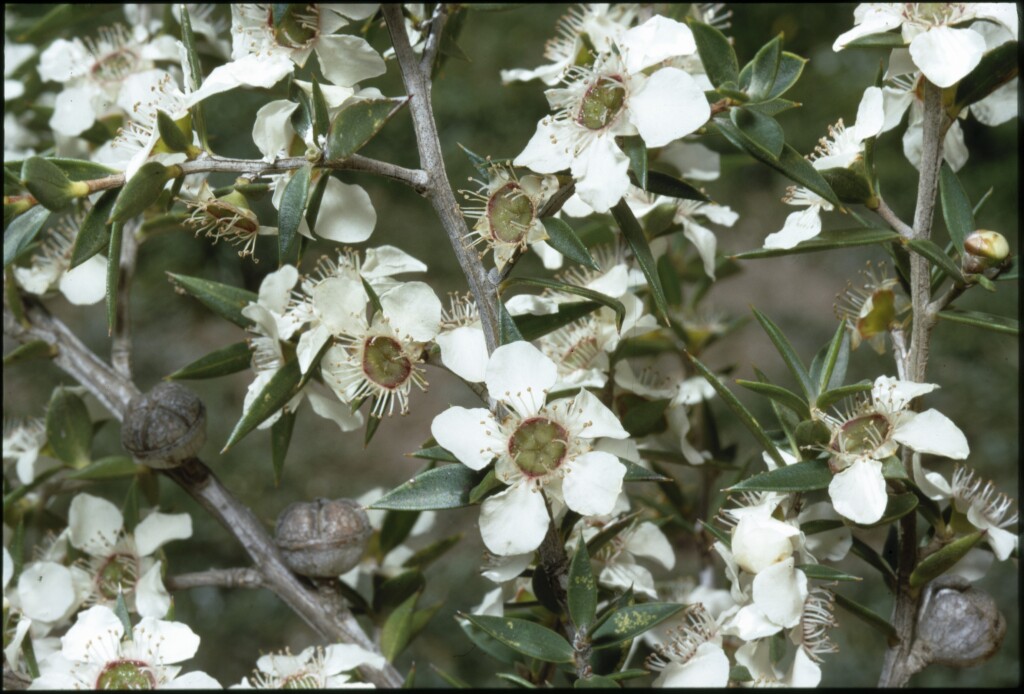Leptospermum scoparium
J.R.Forst. & G.Forst. ManukaShrub or tree, procumbent or erect, to c. 5 m high; bark on smaller stems smooth, shedding in stringy strips. Young stems with a narrow to broad flange near base of petiole. Leaves narrowly elliptic to almost circular (broadest near the middle and tapering above and below), 7–22 mm long, 2–7 mm wide, glabrous (hairy when young); apex acuminate or subulate, flat to incurved, pungent; margins flat to incurved, minutely denticulate. Flowers 9–14 mm diam.; hypanthium 2.5–3.5 mm long, glabrous; pedicel to 1 mm long; sepals triangular, c. 2 mm long, glabrous on outer surface, deciduous; petals 3–6 mm long, white; ovary 5-locular, apex glabrous. Fruit persistent, broadly hemispherical, 6–10 mm diam., surface ultimately shedding in papery flakes, becoming rough, valves woody; seeds 2–3.5 mm long, with a linear-striate surface pattern. Flowers mainly Sep.–Mar.
Wim, GleP, Brid, VVP, GipP, OtP, WaP, Gold, CVU, GGr, DunT, EGL, EGU, WPro, HSF, HNF, OtR, Strz, MonT, VAlp. Also NSW, Tas. New Zealand. Occurs along banks of watercourses and on lower hillslopes, often in rocky sites.
Leptospermum scoparium can approach L. continentale in appearance, leading to difficulties with identification. Where the two occur together (e.g. foothills of Dandenong Ranges) L. scoparium is usually a taller, leafier shrub than L. continentale. New Zealand forms of L. scoparium are widely used in horticulture, giving rise to a wide array of brightly coloured, often double-flowered cultivars.
Lyne, A. (1996). Leptospermum. In: Walsh, N.G.; Entwisle, T.J., Flora of Victoria Vol. 3, Dicotyledons Winteraceae to Myrtaceae, pp. 1009–1019. Inkata Press, Melbourne.
 Spinning
Spinning

